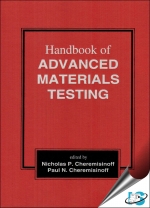Tab Article
This work discusses techniques for developing new engineering materials such as elastomers, plastic blends, composites, ceramics and high-temperature alloys. Instrumentation for evaluating their properties and identifying potential end uses are presented.The book is intended for materials, manufacturing, mechanical, chemical and metallurgical engineers ceramists product development specialists materials scientists and upper-level undergraduate and graduate students in these disciplines.


